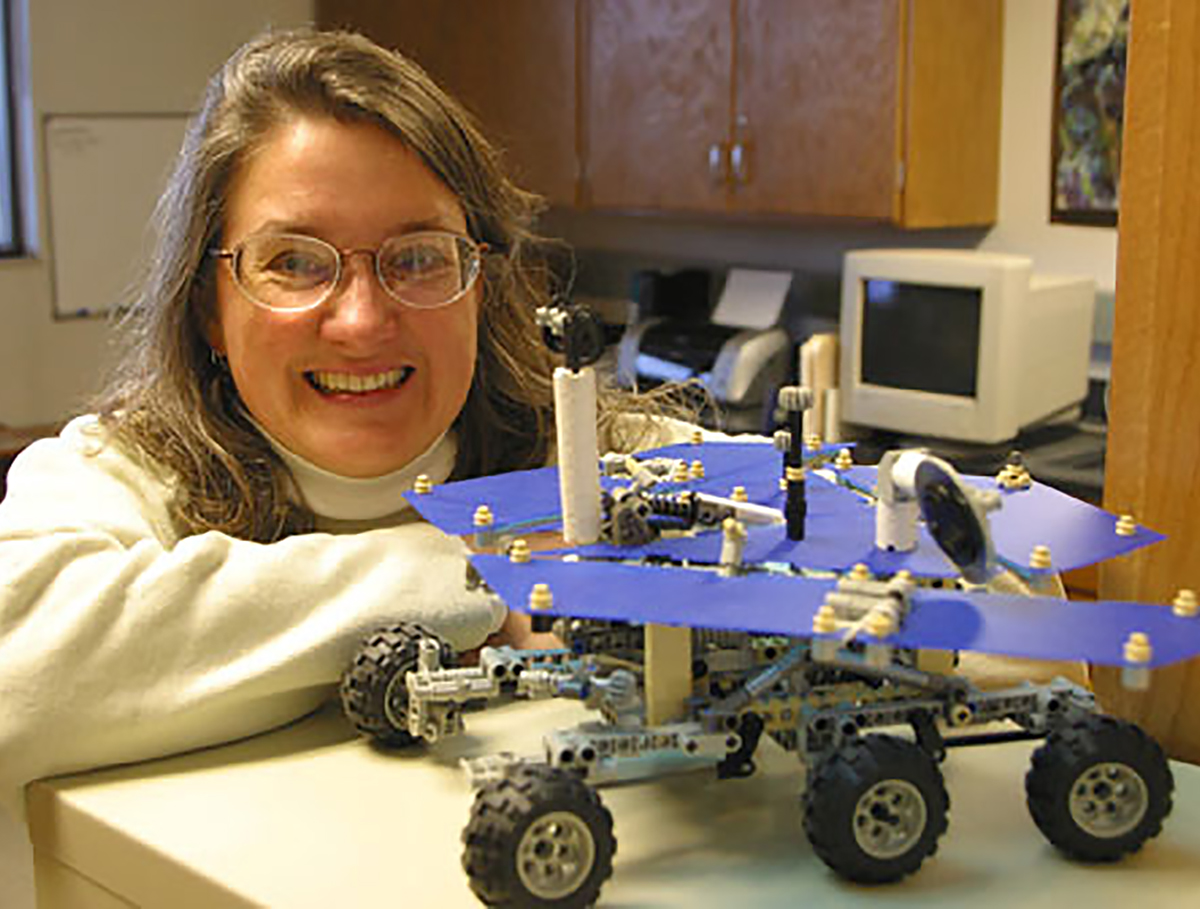The Mars Exploration Rover mission was scheduled to last only three months when Wendy Calvin, University of Nevada, Reno geophysicist, planetary explorer and Science Operations Working Group Chair for the NASA mission, began preparations to study the red planet.
Five years later, the vehicles from planet earth are still making their way around the martian surface, digging and scratching at the rough terrain. Calvin, a Participating Scientist in the mission, has been studying the rocks and soils ever since the twin rovers Spirit and Opportunity screamed through outer space at 12,000 miles per hour, decelerated through the atmosphere to nearly zero mph in six minutes, then bounced onto the barren, inhospitable planet.
Calvin and NASA's Jet Propulsion Lab team will celebrate the five-year anniversaries of the January 2004 landings with seminars, public programs and events this week in Pasadena. Calif.
"The three-month time projection was the worst case scenario," Calvin said. "Five years and still roving is good reason for a celebration." The rovers were expected to go about 600 yards - total mission. Spirit has now gone about five miles and Opportunity has gone about eight.
Calvin spends three days a week doing shift time as the Science Operations Working Group Chair, her most important role with NASA's Jet Propulsion Laboratory as the two six-wheeled solar-powered rovers continue to move around the planet.
"This is an operations intense mission," Calvin said. "We plan a week at a time instead of one or two months ahead like with the MRO (Mars orbiter)."
She works via internet and conference calls with the NASA Jet Propulsion Lab, mainly from her office tucked away on the fourth floor of one of the red-brick engineering buildings on the Reno campus. Calvin plays a number of operational roles with the Mars Explorer Rover team in the Pasadena, facility on mission operations planning, observations and advising on activities.
"Wendy has been one of the most versatile members of our science team," Steve Squyres, Principal Investigator for the science payload on the rover project, said. "Like all the science team members, she helps analyze the data, publish the results, and so on."
Calvin has also been heavily involved in operating the rovers.
"She leads the daily tactical flight operations for one of the rovers, guiding the science team to a consensus on what the rover should do, and then shepherding the plan through the whole process of generating the commands that go to the spacecraft," Squyres said. "It's a very demanding position with a lot of responsibility, and Wendy handles it with style."
In addition to the operations role, her science investigation focuses on the nature of rocks and minerals on the surface using the mini-TES (Thermal Emission Spectrometer) instrument and to provide links between surface and orbiter observations. She is also a co-investigator for the camera on the Mars Reconnaissance Orbiter specializing in polar processes and surface mineral alteration.
Calvin uses as much of her planetary experience as possible in the classroom where she teaches geophysics, geodynamic remote sensing and Geophysics 140 (about the solar system) which is open to all students.
"I like to bring into the classroom what's current in planetary missions," she said.
Major discoveries so far include the discovery of hematites (iron ore) the size of tiny ball bearings covering a large area of the planet surface (rather than usual banded-layer iron ore), silica soils which are probably from volcanic steam vents, sulphates in outcrop rocks and several water processes interacting with rock.
"There could be more big discoveries ahead of us, as long as we have mobility and the science instruments working," she said.
The rovers have made important discoveries about wet and violent environments on ancient Mars. They also have returned a quarter-million images, climbed a mountain, descended into craters, struggled with sand traps and aging hardware, survived dust storms, and relayed more than 36 gigabytes of data via NASA's Mars Odyssey orbiter.
"The potential is out there for more discoveries, to get to new areas, new regions, to get to see new things," explorer Calvin said. "We don't know what we'll find 'til we get there."













